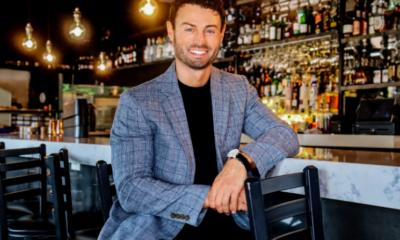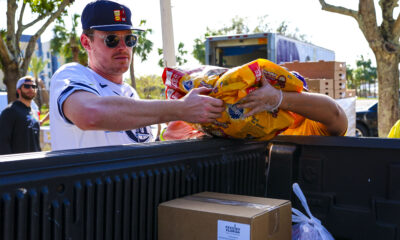Community Voices: More than 900 days on a gas station diet

Welcome to the Catalyst’s Community Voices platform. We’ve curated community leaders and thinkers from all parts of our great city to speak on issues that affect us all. Visit our Community Voices page for more details.
As of this writing, a 42-block area of St. Petersburg has been without a full-service grocery store for more than 900 days. In that time St. Petersburg has elected a new mayor, and half of a City Council, and it is poised to elect the other half within the next few months.
Consider all this activity with nary a word from those in office or running regarding the lack of affordable and nutritious foods available in the area, and the negative impact on health this creates.
I am a clinical dietitian at a local acute care hospital and, every day, I educate and treat patients with diabetes, heart disease and kidney failure who live in the 42-block area. My patients cannot properly manage their diseases on a gas station and convenience store diet that offers low fiber, low nutrient, high sodium and high sugar foods with an even higher price tag.
Many local social service agencies are in the game and aware of the problem, including the St. Pete Free Clinic, Daystar and the Youth Farm at Enoch Davis. However, gardens and food pantries are not the answer to food insecurity. Nor are city-sponsored shuttle services to Walmart or pop-up produce carts.
At the Enoch Davis Youth Farm organizing event, I met a man who learned I was a dietitian; he asked me a slew of questions about food and diabetes. I learned he is a middle-aged man with a past medical history of Type II diabetes, congestive heart failure and chronic kidney disease at the fourth stage, which is pre-dialysis.
With several hospitalizations under his belt over the past two years, he pointed to the closing of the Walmart grocery store as the fast catalyst for his worsening health.
“I used to walk there,” he said. “Every other day I walked there and got fresh vegetables and fruits, nuts and other stuff that I would store in my room.”
“So, how do you get groceries now?” I asked.
“I don’t,” he answered. “Since that store closed I’ve been eating junk from a gas station. Chips and crackers and stuff. And that’s when things got bad for me.”
He suspected his current convenience store and gas station diet was exacerbating his heart failure and kidney failure. I confirmed that managing diabetes on highly processed diet was difficult because of added sugars and lack of fiber. He seemed despondent and hopeless – and I was, too.
Not only is this diet exacerbating his diseases, his food costs have tripled. Consider a gallon of milk at a gas station or convenience store can cost $5, and a dozen eggs $3.75. This compared to $2.59 and 75 cents, respectively, at Aldi across town.
What is the solution? More hand wringing? More shuttles to the mega Walmart?
One promising solution in the works is the One Community Grocery Co-Op, which pledges to follow a road-tested national model of forming grocery co-ops designed by the Food Co-Op Initiative. One Community must recruit 300 members to finish Phase 1 and is seeking financial support for marketing to recruit more members. Co-ops work in cities like Tallahassee and Minneapolis, and will thrive here, too.
Yes, Beach Drive and downtown are booming. Tourism and the arts are flourishing. We have an enviable restaurant and nightlife scene. All these things make St. Petersburg, my hometown, sparkle.
But many in our community are marginalized, left behind and hindered by a lack of leadership, action and vision.
St. Petersburg is only as good as its poorest and sickest residents.








Matthew Epperson
August 27, 2019at10:25 pm
Thank you, Wendy, for using your voice to draw attention to this important issue, and a truly community owned potential solution in the One Community Grocery Co-op. For those interested in learning more, or to invest $25 to become an owner-member of the grocery co-op, or $225 for the full membership, you can email us at onecommunitygrocerycoop@gmail.com to get a membership application. And stay tuned as the website is coming soon! Make sure to “Like” us on Facebook, and come out for our monthly fundraisers every 4th Thursday $3 dinner (next one is 9/26/19) at Pinellas Technical College (901 34th Street South).
There’s definitely no “silver bullet” when it comes to addressing food insecurity. But we can see over and over again that the areas where there is the least money to be made, there is the most likelihood of being left behind by grocery stores. Seemingly every day rural America is losing its stores, and likewise with urban areas like the southside CRA with a high density of people of color. If you look at the St. Petersburg map of Mapping Inequality (https://dsl.richmond.edu/panorama/redlining/#loc=12/27.776/-82.705&city=st.-petersburg-fl) you can see how housing discrimination/redlining put most of south St. Pete as “Grade D ‘Hazardous'”. These systems interlock, and while it is tempting to say “food desert”, truly “food apartheid” would be more apt, as deserts are made by nature, but apartheid is made by humans. This being a systemic issue is part of why I say there’s no silver bullet. But I truly believe that cooperatives not only meet needs for access to things like groceries, but more importantly create access to each other, in the process/practice of democracy in community.
I worked in a grocery cooperative for about 9 years in a college town like Tallahassee, Athens, GA, with a poverty rate of 38%. We purchased from UNFI, the same distributed that sells groceries to Whole Foods (or at least did before Amazon bought them out), EarthFare and other natural and organic grocers. We also purchased up to 35% of our produce from farmers within 100 miles of our store. We were so small that for us, a great price on a dozen eggs was $5. I don’t say that to scare people away, but to note that it’s important that the community show up, and speak up, about the kind of groceries they want this store to sell. The food co-op in Tallahassee is also a natural foods co-op, and that may not be the best option for south St. Pete, but the beauty of the co-op model is that the members will decide (in broad strokes) what price point(s) and what certifications (or not) they want their co-op to offer.
Mac Kellar
August 26, 2019at5:34 pm
The sad REALITY of this neighborhood and others like it is that the community didn’t support the last grocery that was there. Rather, they stole from it and opted to shop elsewhere.
I’ve seen it happen in the city ‘up north’ that I lived in til retiring to St. Petersburg.
Altruism only goes so far and until the communities step up to support the businesses who risk much to
invest and move into the areas… nothing will improve.
Judith Turner
August 27, 2019at8:27 pm
this is a quote from Journalist Mark Albright
“Having covered the supermarket industry for about 25 years and the Midtown stores in question, a few points.
1. the Sweet bay and Walmart on 18th was profitable. That was largely because the shopping center was subsidized by local government, which was reflected in the store’s rent.
2. Walmart runs lots of stores in inner city neighborhoods and retail theft is about the same there as it is in high income neighborhoods.
3. Grocers measure driving time in locating store and generally try to be within a two mile drive of enough people to make their store work. So if you remove Lake Maggiore and all the bayous, you see the problem of how the gray square does not reflect the market forces they use.
4. The real problem chain stores wrestle with is whether customers who shop in a store feel safe shopping there. Only so much of that is within the control of the merchant. As a result Walmart, Publix, Aldi, Save-a-Lot and Winn-Dixie have put stores along all sides of the major arterial highways on the fringe of this gray areas – about a quarter of which is water”
Wendy Wesley
August 26, 2019at5:17 pm
4th Ave South to 45th Ave. South. The Bay to 34th St. South.
Roland Strobel
August 26, 2019at3:43 pm
Where is the 42-block area? How were the boundaries identified?
Wendy Wesley
August 26, 2019at5:06 pm
4th Ave South to 45th Ave. South. The Bay to 34th St. South.